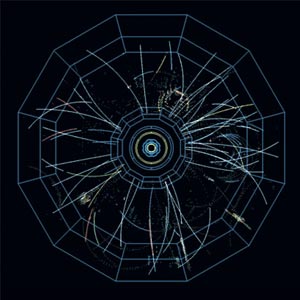String theorists need to do much more to explain their field's genuine links to experiment

There is no getting away from it: string theory is an incredibly vast and challenging subject. With its talk of D-branes, 10- or 11-dimensional universes and a myriad of possible solutions – 10500 at the last count – string theory looks to outsiders, including many physicists, more like an arcane branch of mathematics than tangible physics. It appears to have told us nothing new about the real world, despite almost 40 years of trying.
But look into string theory in even a little detail and it is clear why so many young physicists are lured into the field (see “Stringscape”). First, although the details need to be worked out, string theory naturally unifies quantum mechanics and general relativity, thus providing a quantum theory of gravity and a framework that describes all the fundamental interactions in terms of just a single entity: strings, which vibrate in different ways. Second, contrary to what outsiders might expect, string theory is guided by problems in the real world, however remote these may seem.
For instance, string theory has given physicists a better understanding of blackhole entropy and has proved useful in modelling aspects of the quark–gluon plasma observed at the Brookhaven National Laboratory. String theory also offers the only explanation physicists have for the incredibly small value of the cosmological constant, which is thought to be causing the expansion of the universe to accelerate.
These are not, however, the kind of specific, testable predictions that all good physical theories must make before being accepted as a description of the real world. While this is, quite rightly, the main fuel for critics of string theory, such “falsifiability” is not the sole judge of a scientific theory (see “String theory under scrutiny”). Indeed, string theory raises several philosophical issues, such as the role of anthropic reasoning (pp16–17; print edition only), and forces us to face up to the meaning of space and time (pp18–19; print edition only).
With CERN’s Large Hadron Collider (LHC) due to switch on next year, now is the wrong time to slam string theory for its lack of predictive power. While not able to prove string theory is right, the discovery of supersymmetric particles at the LHC would give it a major boost, as would the discovery of “Kaluza–Klein” particles and possibly even mini black holes, which could be a signature of the universe’s putative extra dimensions. A flood of precision cosmological data due in the next few years will also offer new ways to put string theory to the test.
But string theory can be criticized for how it has promoted itself. Since the mid-1980s, many string theorists have oversold their subject by making grandiose claims about a “theory of everything”. Although that tendency has disappeared, it no doubt diverted some physicists from other, potentially more useful, lines of research in theoretical physics. Meanwhile, string theorists have not responded well to recent attacks based on the theory’s lack of testable predictions, most preferring to keep quiet rather than to engage in debate.
However, the richness of string theory that has became apparent in the last decade, and its increasing contact with the real world, gives theorists something to shout about. This is why our main feature on the subject, which started with fairly modest intentions, has ballooned into the longest ever to appear in Physics World. As the views of even many non-string theorists in the article make clear, the theory still holds all the potential it ever did to revolutionize our understanding of the universe.



